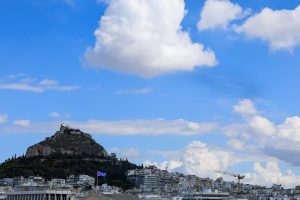The Acropolis Museum is honoring the memory with a symbolic exhibition on occasion of the bicentennial of Lord Byron’s death, entitled “The Parthenon and Byron”, which opened on Friday.
The exhibition touches on the removal of the Parthenon friezes in 1801 by rogue British diplomat Lord Elgin, nearly two decades before the commencement of the Greek War of Independence in 1821.
There are three sections in the small exhibition and the accompanying publication:
The original passport of Byron and a genuine official Ottoman document exhibited for the first time first sparked a renewed discussion over the campaign for the return and reunification of the Parthenon sculptures. This document refutes the claim of Elgin’s supposed official Ottoman document granting permission for friezes’ removal.
A selection of annotated images by travelers to the Acropolis and the Parthenon before Lord Byron and the looting of the monument by Elgin before the establishment of the modern Greek state and the declaration of the Acropolis as an archaeological site in 1834 are depicted in the exhibition video.
A brief biography and excerpts from Byron’s poems The Curse of Athena and Childe Harold’s Pilgrimage, which refer to the looting and vandalism of the Parthenon’s sculptures by Elgin, as well as their subsequent smuggling away.
Additionally, museum visitors can view The Exodus of Messolonghi (1827), a historic event that inspired numerous artists, including Louis Joseph Toussaint Rossignon.
Entry to the ground floor foyer of the Museum is free of charge.
There is also a bilingual publication (Greek-English) that will be on sale at the museum gift shop, starting on Monday.


